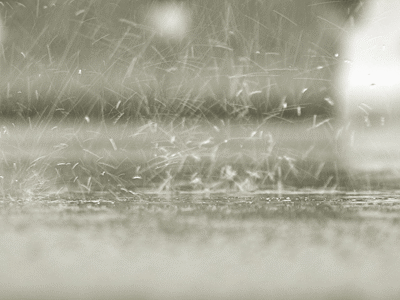Raindrops keep fallin' on my head
And just like the guy whose feet are too big for his bed
Nothin' seems to fit
Those raindrops are fallin' on my head, they keep fallin'
So I just did me some talkin' to the sun
And I said I didn't like the way he got things done
Sleepin' on the job
Those raindrops are fallin' on my head, they keep fallin'
And just like the guy whose feet are too big for his bed
Nothin' seems to fit
Those raindrops are fallin' on my head, they keep fallin'
So I just did me some talkin' to the sun
And I said I didn't like the way he got things done
Sleepin' on the job
Those raindrops are fallin' on my head, they keep fallin'
...
- B.J. Thomas
Laala lalaala lalala.... I just love that song don't you? It's just one of the many I have been singing for the past two days as a contemplate my consistently soaking wet shoes and try to keep the kids morals up. Yes, I came back from N.Y., leaving my hubster behind, only to get smacked in the face with GIGANTIC tree uprooting storms I have to walk through.
But on the bright side, it allowed me to look into the science of storms, weather, and raindrops. This week's question is actually two questions and doesn't come from Trivial Pursuit, but straight from the mouth of my 6 foot 1 little brother (I'm 5"1' and the older sister which no one seems to believe even though I'm married and graduated from University, but I digress, and you don't really care about my age/size related frustrations).
Q.12
a)Are raindrops shaped like teardrops?
and
b)Why are some raindrops bigger than others?
...
...
A.12
a) No
b) Differences in condensation nuclei size & rate of coalescence.
Yep, we have been duped since childhood with images of smiling tear- shaped raindrops. Water dripping from a faucet or off something is tear-shaped because of tension keeping the droplet from falling but when it falls freely, it's shape depends on it's size.
A raindrop with a diameter below 2mm is spherical. Between 2 and 8 it gradually transitions to a hamburger bun shape (or jellyfish shape depending on your interests) before bursting into smaller raindrops, generally spherical ones. Why? It's a battle of two forces: water tension vs air resistance.
Fun fact? Only spherical raindrops produce rainbows.
Photo by Emmanuel Villermaux, via Science News
Now for part B. First off, raindrops are, simply put, condensed water vapour. If you remember the water cycle, water evaporates from the earth. The air is filled with tiny particles in suspensions such as dust, we call these condensation nuclei because water vapour will condense (return to liquid form) - warp itself around the particle. Each particle becomes a droplet. These droplets vibrating around in the atmosphere bump into other droplets and become bigger and bigger, this is called coalescence. Once they are big enough, the droplets start falling towards the earth and are now called raindrops. So, if the initial particle or condensation nuclei is on the big size and the droplet eats lots of other droplets on the way down, you've got a big raindrop.
As simple as that! <3 We could easily complicate our lives by dwelling into the physics of the whole thing but I'll leave that to someone else.
Take care!

















